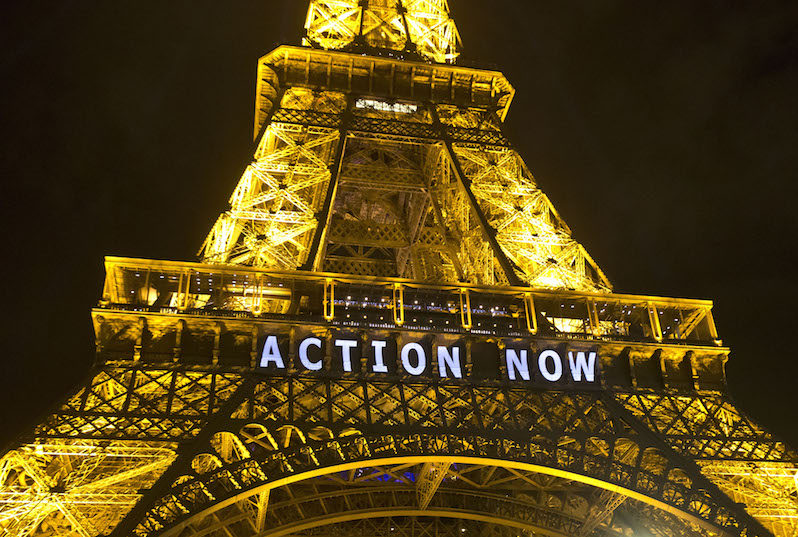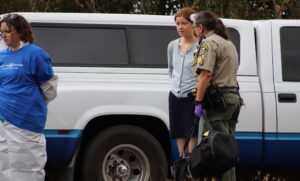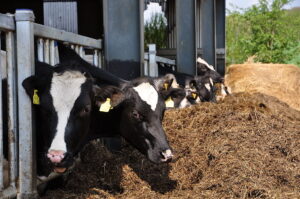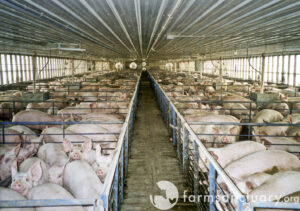Apocalyptic Capitalism
The Paris climate summit, dominated by the economic and political forces that are driving us toward destruction, will end with the usual empty rhetoric and a continued assault on the ecosystem. A slogan on the Eiffel Tower referring to the COP21 United Nations Climate Change Conference in Paris. (Michel Euler / AP)
1
2
A slogan on the Eiffel Tower referring to the COP21 United Nations Climate Change Conference in Paris. (Michel Euler / AP)
1
2
The animal agriculture industry has, in a staggering act of near total censorship, managed to stifle public discussion about the industry’s complicity in global warming. It is barely mentioned in climate summits. Yet livestock and their byproducts, as Kip Andersen and Keegan Kuhn point out in their book, “The Sustainability Secret,” and their documentary, “Cowspiracy,” account for at least 32,000 million tons of carbon dioxide (CO2) per year, or 51 percent of all worldwide greenhouse gas emissions. Methane and nitrous oxide are rarely mentioned in climate talks, although those two greenhouse gases are, as the authors point out, respectively, 86 times and 296 times more destructive than carbon dioxide. Cattle, worldwide, they write, produce 150 billion gallons of methane daily. And 65 percent of the nitrous oxide produced by human-related activities is caused by the animal agriculture industry. Water used in fracking, they write, ranges from 70 billion to 140 billion gallons annually. Animal agriculture water consumption, the book notes, ranges from 34 trillion to 76 trillion gallons annually. Raising animals for human consumption takes up to 45 percent of the planet’s land. Ninety-one percent of the deforestation of the Amazon rain forest and up to 80 percent of global rain forest loss are caused by clearing land for the grazing of livestock and growing feed crops for meat and dairy animals. As more and more rain forest disappears, the planet loses one of its primary means to safely sequester carbon dioxide. The animal agriculture industry is, as Andersen and Kuhn write, also a principal cause of species extinction and the creation of more than 95,000 square miles of nitrogen-flooded dead zones in the oceans.
A person who eats a vegan diet, they point out, a diet free of meat, dairy and eggs, saves 1,100 gallons of water, 45 pounds of grain, 30 square feet of forested land, 20 pounds CO2 equivalent, and one animal’s life every day.
The animal agriculture industry has pushed through “Ag-Gag” laws in many states that criminalize protests, critiques of the industry, and whistleblowing attempts to bring the public’s attention to the staggering destruction wrought on the environment by the business of raising 70 billion land animals every year worldwide to be exploited and consumed by humans. And they have done so, I presume, because defying the animal agriculture industry is as easy as deciding not to put animal products—which have tremendous, scientifically proven health risks—into your mouth.
We have little time left. Those who are despoiling the earth do so for personal gain, believing they can use their privilege to escape the fate that will befall the human species. We may not be able to stop the assault. But we can refuse to abet it. The idols of power and greed, as the biblical prophets warned us, threaten to doom the human race.
Timothy Pachirat recounts in his book, “Every Twelve Seconds: Industrialized Slaughter and the Politics of Sight,” an Aug. 5, 2004, story in the Omaha World-Herald. An “old-timer” who lived five miles from the Omaha slaughterhouses recalled the wind carrying the stench of the almost six and a half million cattle, sheep and hogs killed each year in south Omaha. The sickly odor permeated buildings throughout the area.
“It was the smell of money,” the old-timer said. “It was the smell of money.”
“The Sustainability Secret,” a book quoted in this column, has an introduction by Truthdig columnist Chris Hedges and was ghostwritten by Truthdig’s books editor, Eunice Wong.
Your support matters…
SUPPORT TRUTHDIG
Independent journalism is under threat and overshadowed by heavily funded mainstream media.
You can help level the playing field. Become a member.
Your tax-deductible contribution keeps us digging beneath the headlines to give you thought-provoking, investigative reporting and analysis that unearths what's really happening- without compromise.
Give today to support our courageous, independent journalists.






You need to be a supporter to comment.
There are currently no responses to this article.
Be the first to respond.